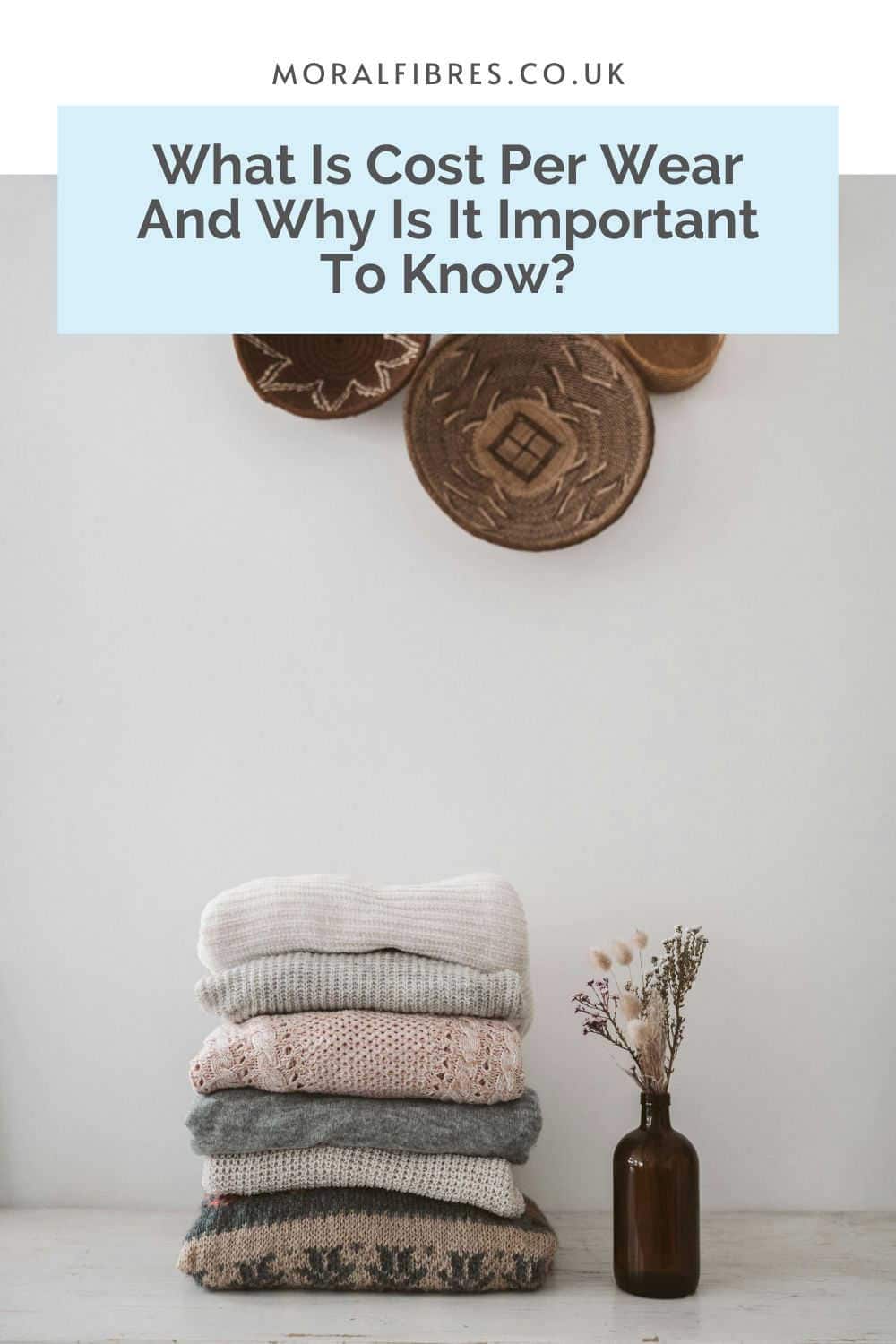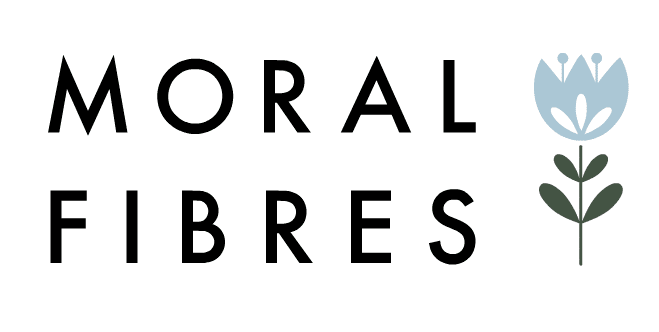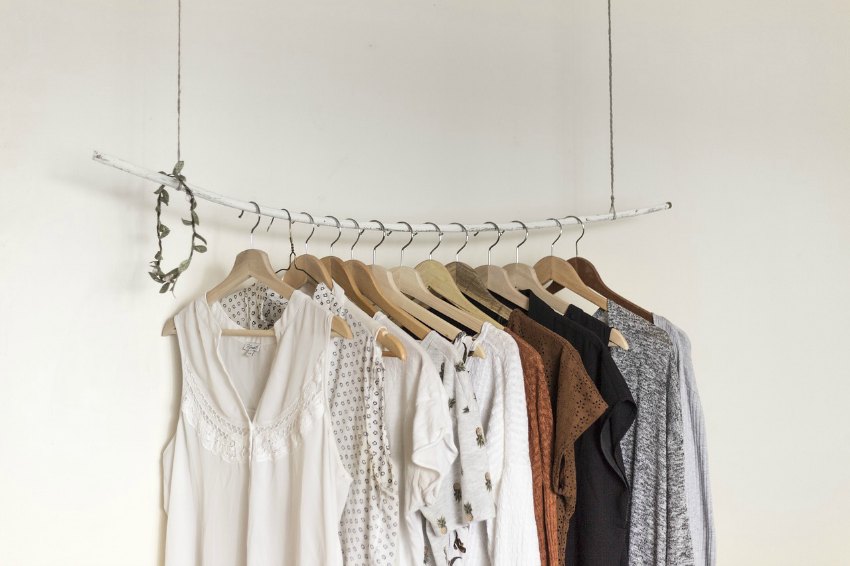What Is Cost Per Wear And Why Is It Important To Know?
To support the running costs of Moral Fibres, this post contains affiliate links. This means Moral Fibres may earn a small commission, at no extra cost to readers, on items purchased through these links.
Let me explain why the cost-per-wear concept is one of your most useful tools when it comes to shopping ethically and mindfully.
If you are looking to develop more mindful approaches to consumerism, then no doubt you’ve already removed yourself from mailing lists. It’s certainly one of my top tips to avoid being swayed by all the “must-have” releases that fast-fashion brands seem to offer every week.
If you’re looking to have another tool in your arsenal to help resist the clutches of fast fashion, then you’ll want to know about cost per wear. This simple yet powerful formula calculates the value of a garment based on its price and the number of times it is worn.
If maths isn’t your strong point, don’t worry, the equation is straightforward. Simply divide the cost of your item of clothing by the number of times you’ve worn it. It might be a seemingly basic calculation, however, it’s a powerful tool that holds profound power in helping you to create a more mindful wardrobe.
By embracing the cost-per-wear philosophy, I’ve found this method helps to encourage me to view my clothing as long-term investments rather than short-lived fashion statements. This shift not only aligns with the principles of sustainable living but also promotes responsible consumer behaviour.
How Does Cost Per Wear Work?

Let’s see how in detail it all works, so you can apply it to your wardrobe too.
Picture the scene. It’s a sunny Saturday, just after payday. I have budgeted and decided I can spend up to £50 on clothes this month. I meet my friends for a coffee and a catch-up. Then we head to our favourite fast fashion shop on the high street. Here, I buy a pair of jeans for £15 because I figure you can never have too many pairs, especially at that price.
At the next shop, I pick up a red ‘going out’ top for £10, even though I don’t need it. The thing is it’s pretty and on sale. My friends encourage me to buy the top because we’re going out for drinks that night and I can wear it then.
Impulsively I also pick up a pair of red shoes for £15. I buy them because they go with the top, even though they don’t go with anything else I own. This gives me a total spend of £40.
I go out that night in my £40 outfit and feel great. Sadly, my retail high doesn’t last that long.
The cheap top loses its shape in the wash after two wears and I discard it. Cost per wear? £5.
I wore the shoes once but since I discarded the top that matches, the shoes languish at the back of the wardrobe forevermore. Cost per wear? £15.
The cheaply made jeans develop a tear in the crotch after a couple of months of wear. I can’t repair the tear. I try to find a tailor to repair the jeans, but the repair cost is more than I paid for the jeans, so I bin them. Let’s say the cost per wear of the jeans was £1.50.
From a total hypothetical spend of £40, the cost per wear of these purchases was a huge £21.50.
Why This Method Works
If I had decluttered my wardrobe, and examined the gaps, I would have known that I didn’t need the jeans. Nor did I need a ‘going out’ top. And I would have known I definitely didn’t need the red shoes.
Instead, I would have known that what I did need was in fact a classic black go-with-everything top. I could have shopped from a women’s ethical clothing brand. Here, with my £50 budget have bought a well-made quality black top for £48. A top that I know I would wear repeatedly, giving me a far lower cost per wear. If I wear the top 30 times, as per the 30 wears rule, the cost per wear of my £48 top would be a bargainous £1.60.
Suddenly, using cost-per-wear analysis, those cheap fast-fashion purchases don’t seem to add up. Nor do they seem quite so good value any more. That more expensive but better made, ethically produced top suddenly becomes better value in the long run.
The idea of saving up to shop for better-made ethically produced pieces becomes more appealing and makes more economic sense. It encourages us to see clothing as long-term investments rather than short-lived trends. Plus it helps you become more immune to those fast fashion purchases.
If you need another economic argument for shopping ethically then this cost analysis of a $10 (non-fair trade) top in my ethical clothing infographics post is also useful.
The Bottom Line
The concept of cost per wear encourages us to view our clothing as long-term investments rather than short-lived trends. By prioritising quality over quantity, we can understand that the true value of clothing goes beyond the price tag, and become more mindful and conscious shoppers.
Found this post useful? Please consider buying me a virtual coffee to help support the site’s running costs.




